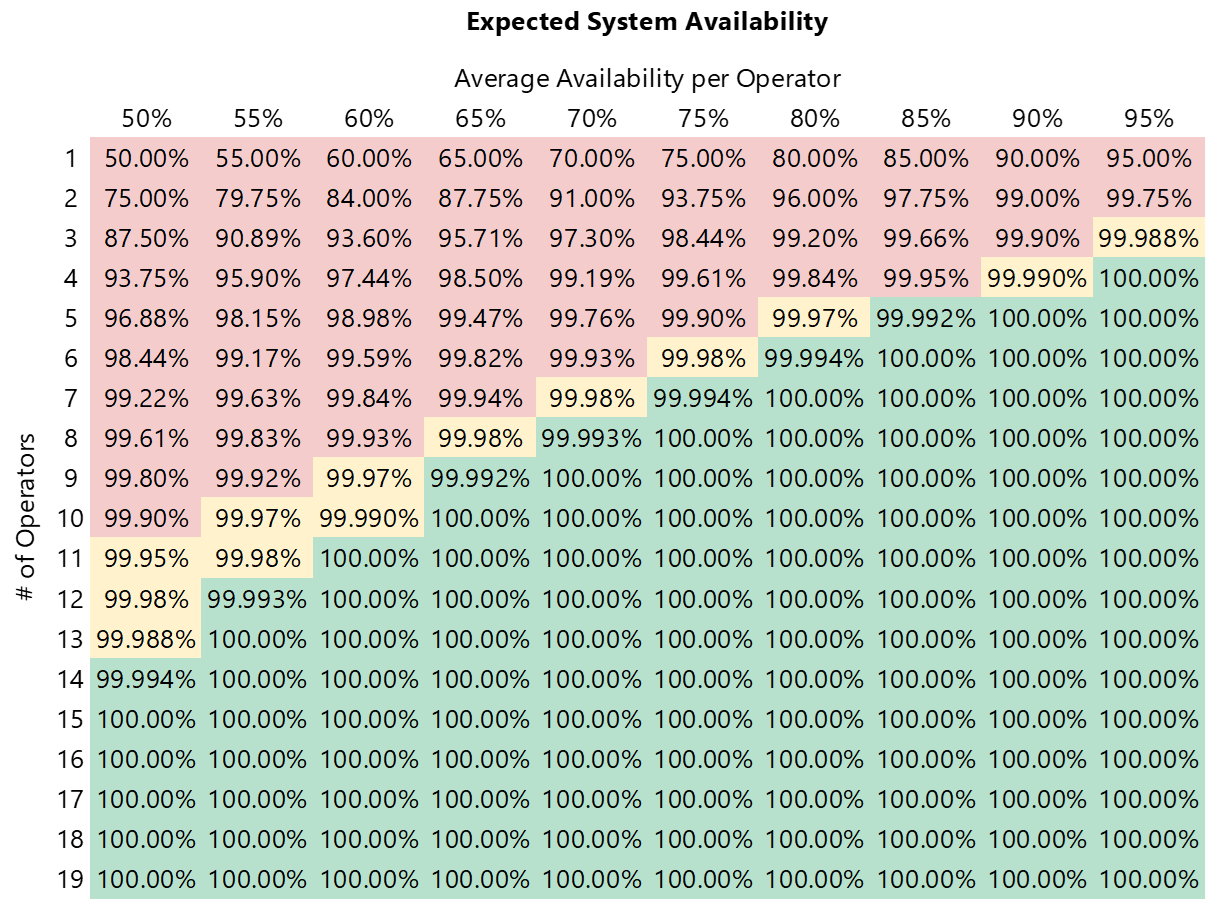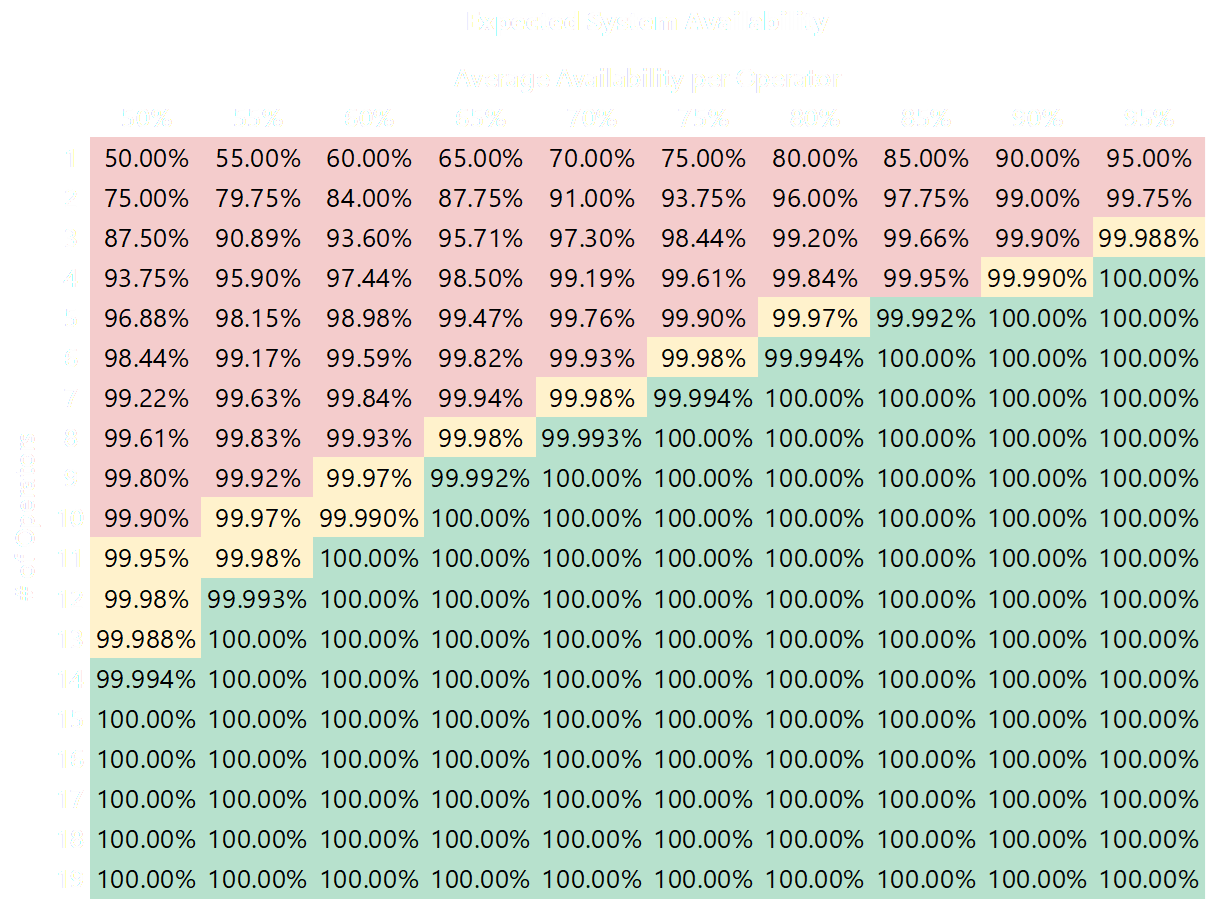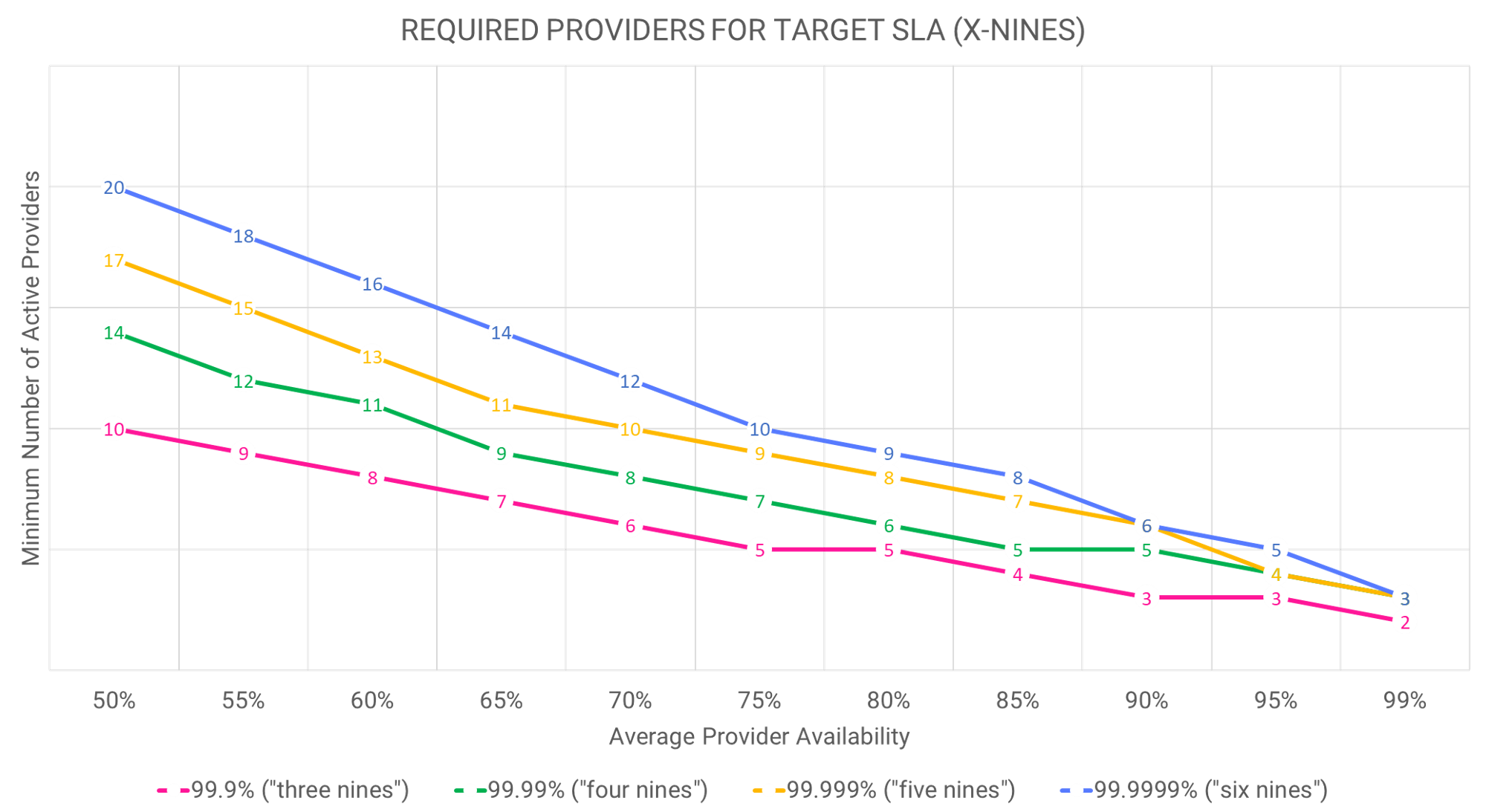Compounding SLA
In the world of centralized infrastructure, achieving reliability typically requires significant scaling and investment in redundant systems. Companies must operate these systems 24/7/365, regardless of the number of clients they serve, while simultaneously facing risks that can't be effectively diversified.
QRY's innovative concept of Compounding Service Level Agreements (SLAs) offers a solution to these challenges by leveraging decentralized infrastructure. This approach allows multiple teams from around the globe, operating under different standards and using various clients, to coordinate and serve as redundancy for one another. By pooling their individual reliability, these independent operators can quickly outperform centralized players.
The QRY Engine is designed to facilitate and incentivize infrastructure teams worldwide to participate in this decentralized API infrastructure. As more teams join and demonstrate their integrity and responsiveness, clients can compound SLAs, resulting in unparalleled robustness.
The Compounding SLA concept revolutionizes the way we think about reliability in infrastructure. By embracing decentralization and fostering collaboration among independent operators, QRY creates a more resilient and adaptable ecosystem. This approach not only mitigates the risks associated with centralized frameworks but also ensures that no single company can monopolize reliability. In essence, QRY's Compounding SLA paves the way for a new era of highly available systems.
It's possible to calculate the combined system availability using the following formula:
where is the availability of each individual provider , and represents the product of all terms for each provider in the system.
This formula assumes that the individual providers' availability is independent of one another, and it calculates the combined availability by determining the probability that at least one provider is available.
The table below shows the combined availability as the number of providers and their average availability increase. As the number of providers increases, the combined system availability will continue to improve, approaching 100%.


The minimum number of providers needed to reach a target combined availability based on the average availability is also an interesting metric to be kept, and can be calculated by the formula :
The following graph of the function shows that as the average availability of providers improves, fewer providers are needed to reach the target combined availability.


The chart also introduces the concept of x-nines. X-nines represent the percentage of time a system or service is expected to be operational. For instance, 3-nines (99.9%) indicates a system that is available 99.9% of the time, whereas 5-nines (99.999%) signifies a system that is available 99.999% of the time. In the context of Service Level Agreements (SLAs), x-nines are often employed to set the expected level of service and reliability a provider must deliver.
The downtimes for various levels of availability, calculated on an annual basis, are as follows:
-
3-nines (99.9% availability): Downtime per year: 8 hours and 41 minutes
-
4-nines (99.99% availability): Downtime per year: 52 minutes and 30 seconds
-
5-nines (99.999% availability): Downtime per year: 5 minutes and 15 seconds
-
6-nines (99.9999% availability): Downtime per year: 31.5 seconds
Most services, even those considered highly reliable, usually target and achieve availability levels of around 3-nines (99.9%).
The concept of x-nines is relevant to QRY, as it showcases the power of the Compounding SLA approach. While individual providers might not achieve high x-nines levels on their own, the QRY system can still achieve remarkable combined availability through the compounding effect of multiple providers working together. The chart above shows that as the number of providers increases and the average availability of each provider improves, the QRY network approaches higher x-nines levels without requiring each individual provider to maintain that level of availability.